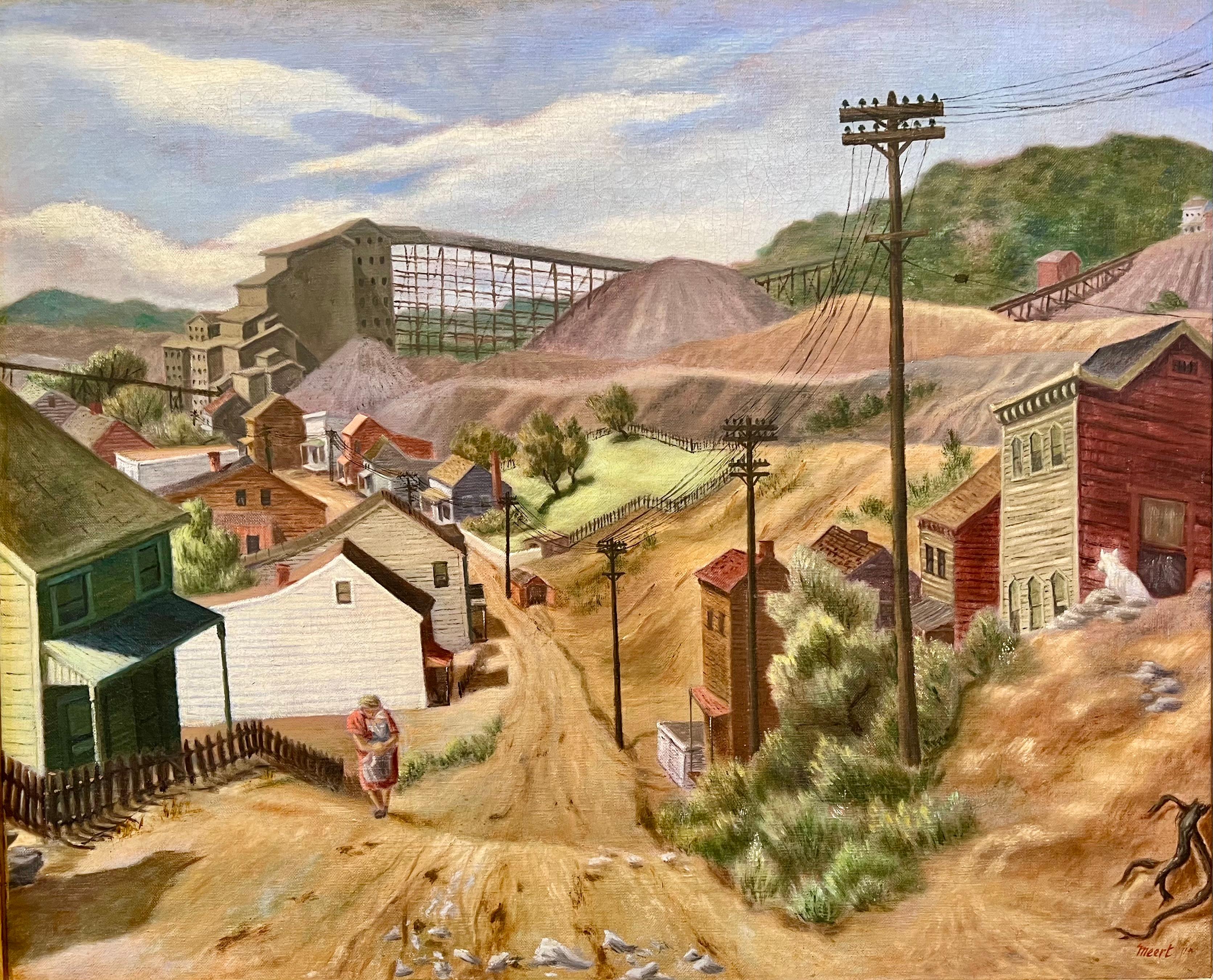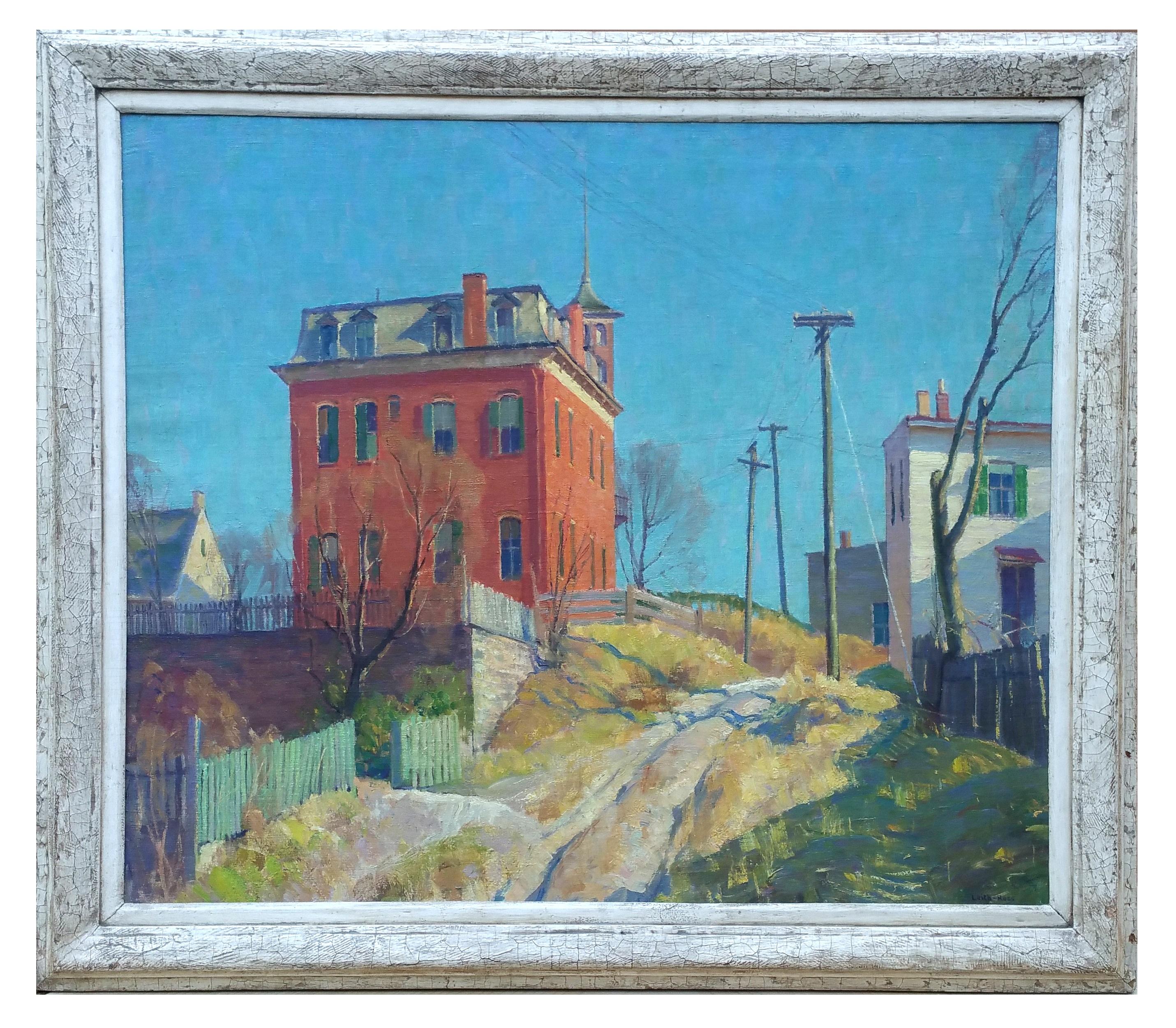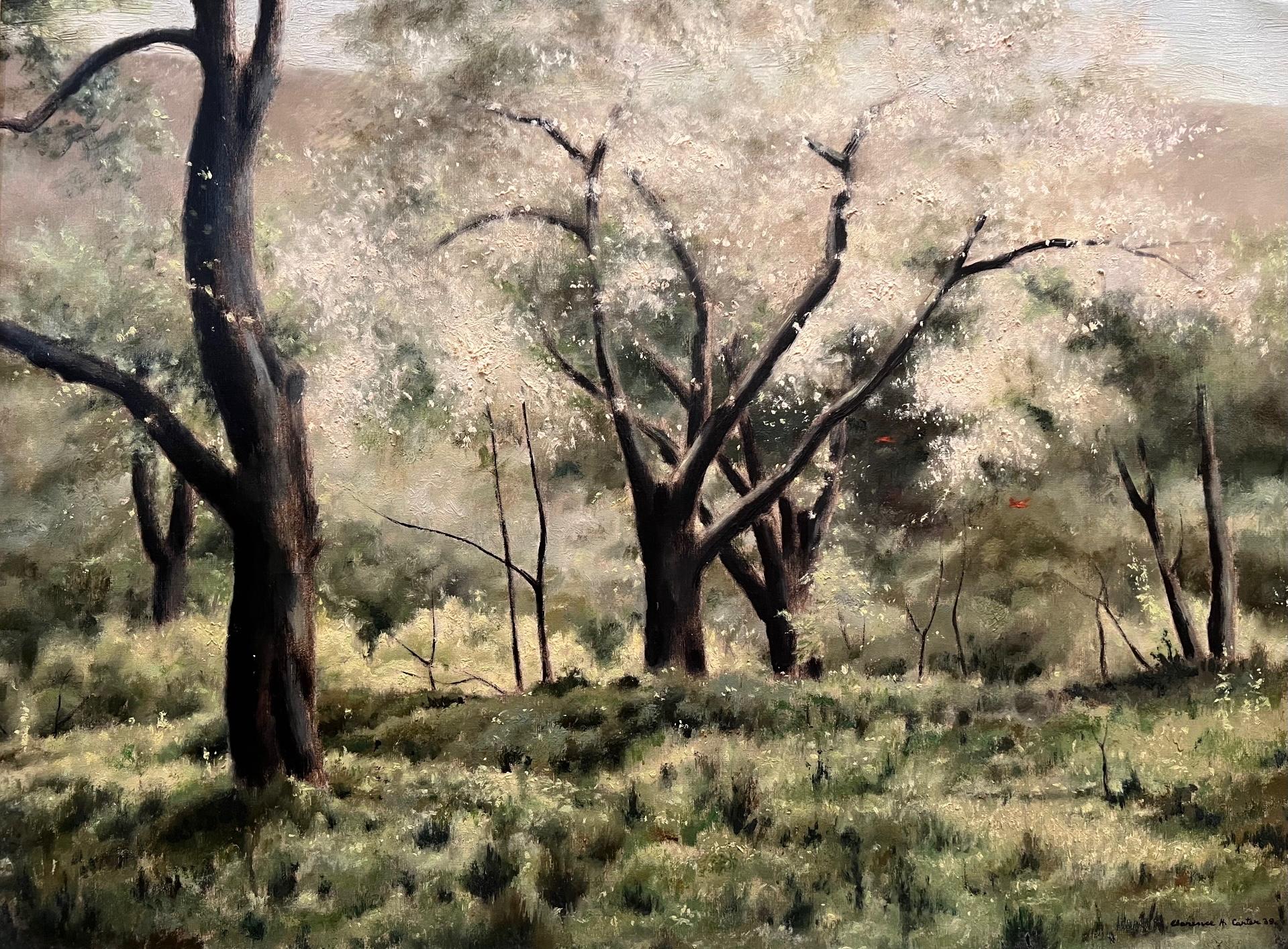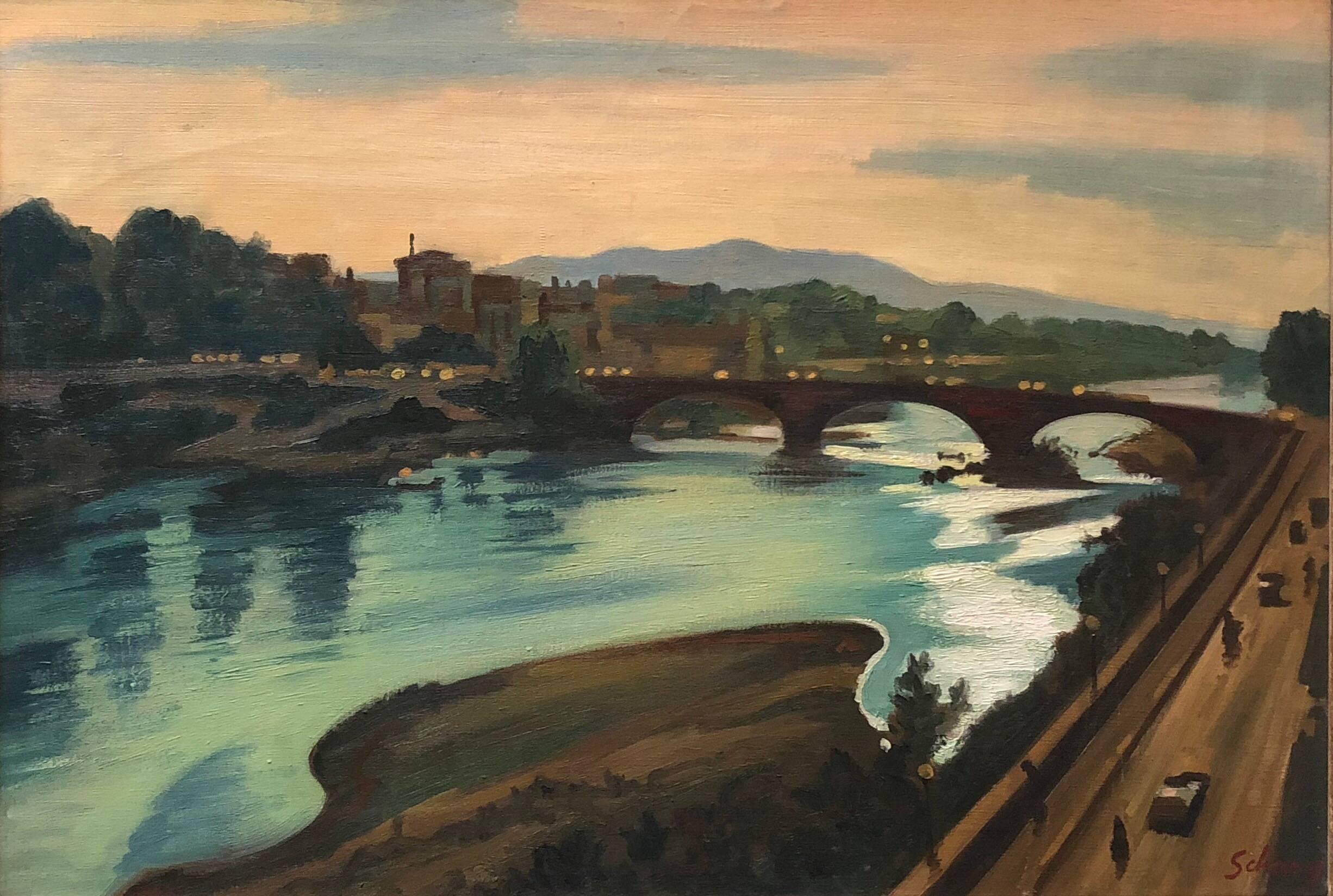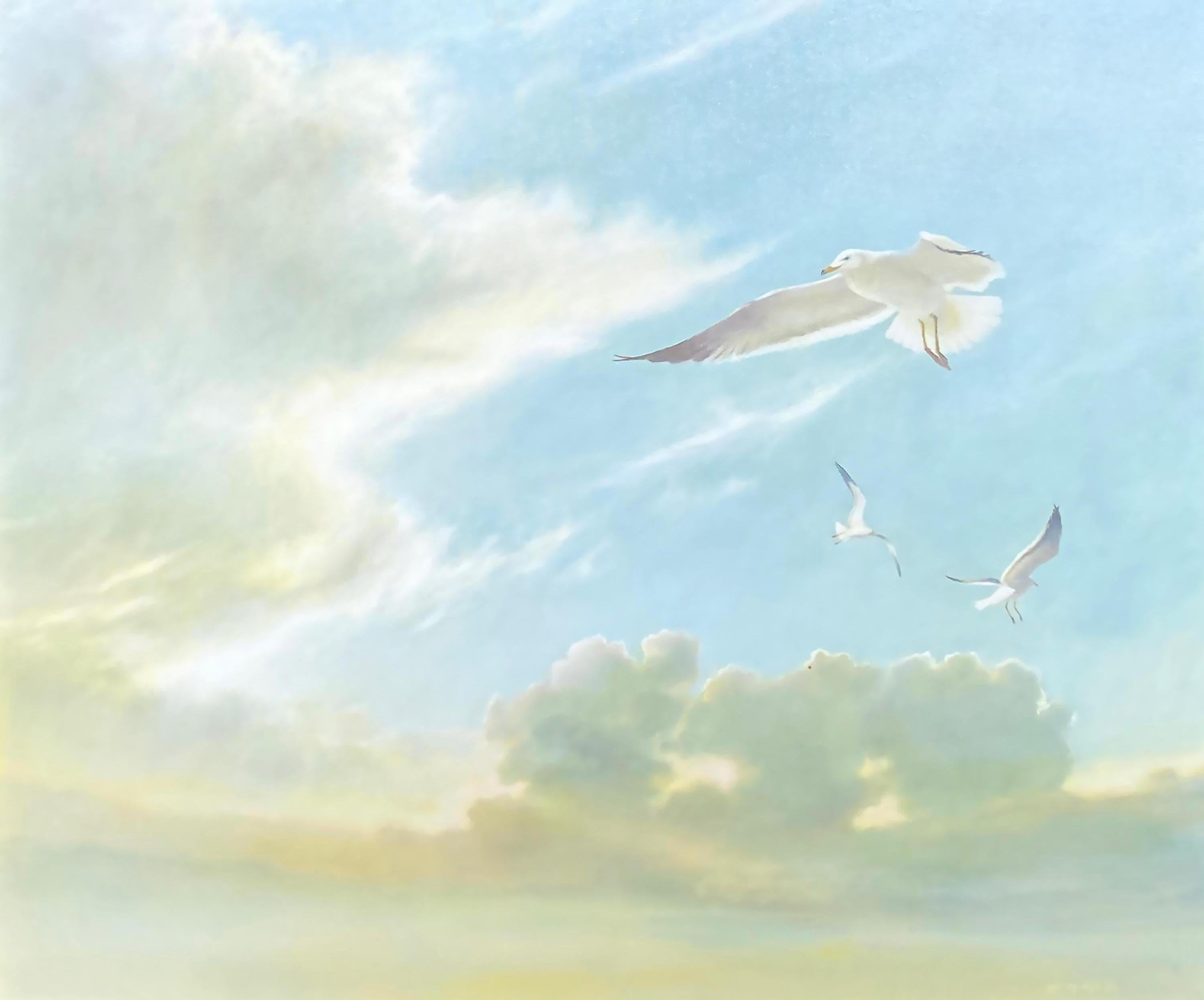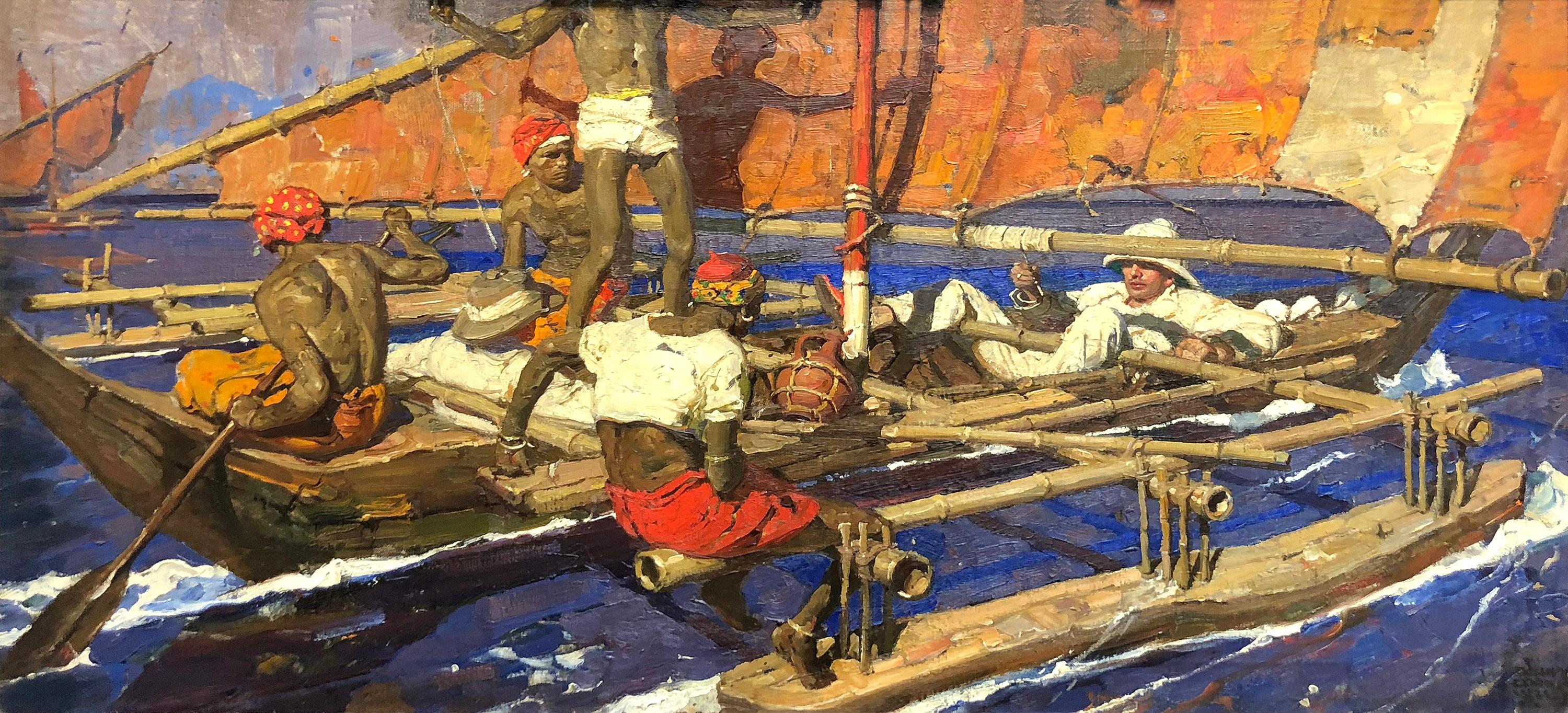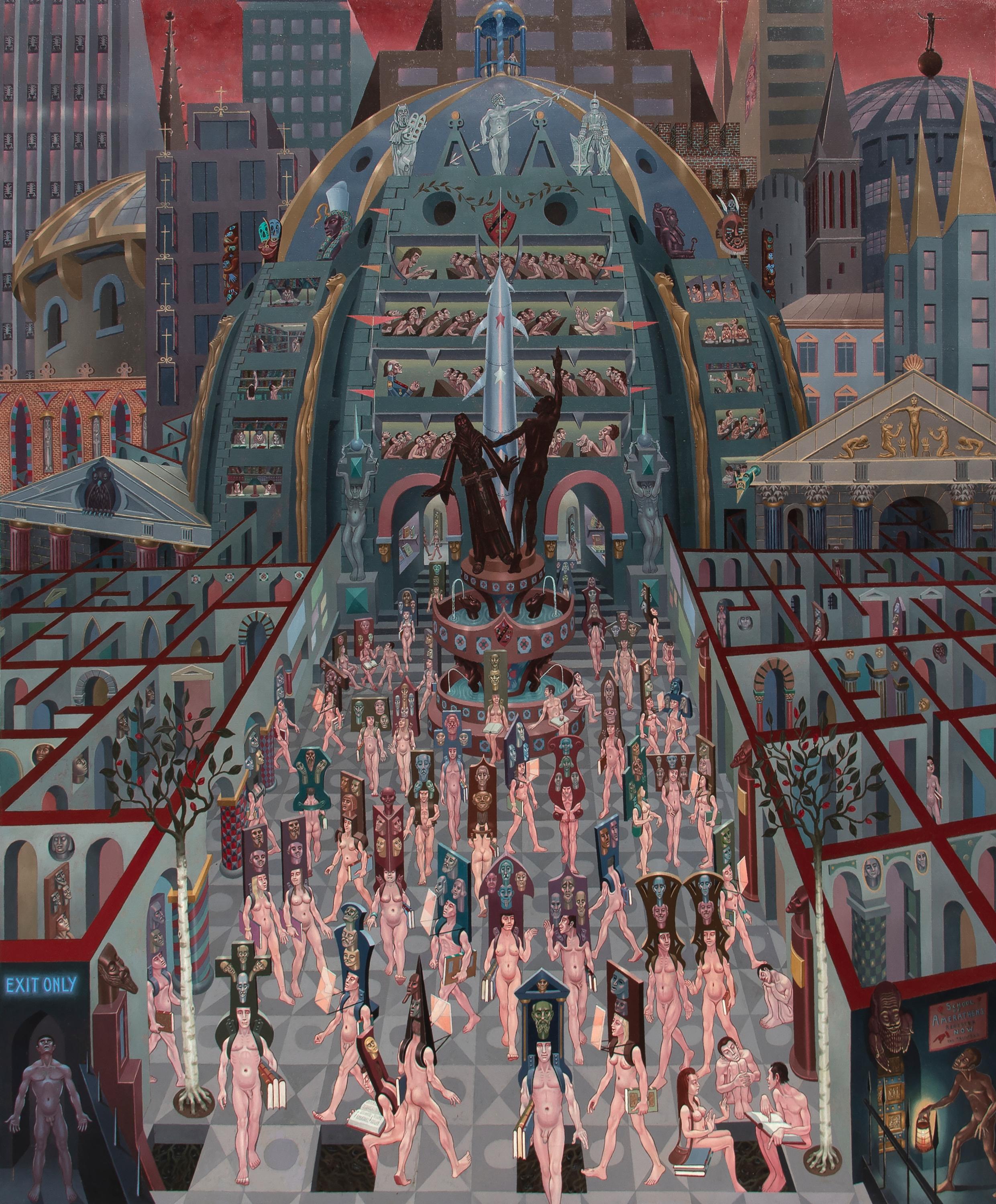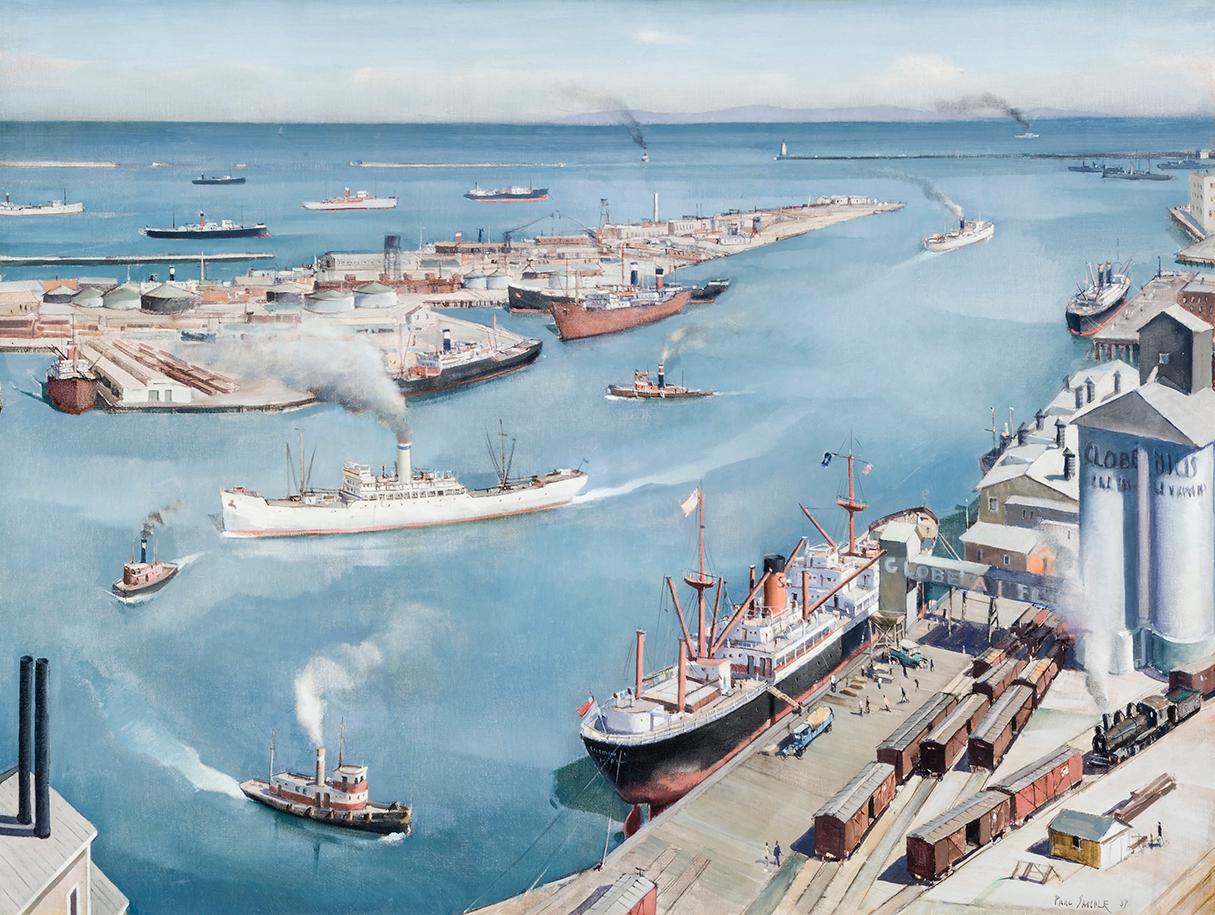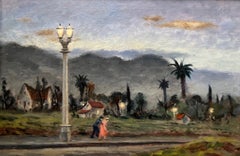
"New York" Urban Cityscape in Oil, 1977
View Similar Items
1 of 5
Unknown"New York" Urban Cityscape in Oil, 19771977
1977
About the Item
- Creation Year:1977
- Dimensions:Height: 18 in (45.72 cm)Width: 24 in (60.96 cm)Depth: 0.75 in (1.91 cm)
- Medium:
- Movement & Style:
- Period:
- Condition:Minor wear.
- Gallery Location:San Francisco, CA
- Reference Number:Seller: 476791stDibs: LU29823117853
You May Also Like
- Gold Mine, Central City, ColoradoBy Joseph MeertLocated in Los Angeles, CAThis painting is part of our exhibition America Coast to Coast: Artists of the 1930s Goldmine, Central City, Colorado, oil on canvas, 36 x 28 inches, c. 1936, signed lower right, ex collection of Platt Fine Art, Chicago, Illinois (label verso). About the Painting Joseph Meert’s painting, Goldmine, Central City, Colorado, depicts the short-lived resurrection of a once prominent city just outside Denver. Central City was founded in 1859 soon after John Gregory struck gold in the area. As word spread, thousands of miners converged into “Gregory’s Gulch” and its surroundings became known as the “richest square mile on earth.” Mining production quickly increased resulting in Central City to becoming Colorado’s largest city in the early 1860s. Despite some technical difficulties transitioning to lode mining and the rise of competition from Leadville, Central City remained an economic boom town through the turn of the century. But, with every boom, there is a bust. World War I marked the end of Central City’s prominence as ore production ground to a halt and by 1925, the town’s population shrank to only 400 people. The desperation of the Great Depression and a nearly 100% increase in the price of gold lured labor and capital back to Central City. Meert painted in Colorado during the mid-1930s, a time when he created his most desirable works. It is during this period of renaissance that Meert captures one of Central City's outlying dirt streets bordered by 19th century wooden houses from the town's heyday and the more recently installed electric lines leading to a distant gold mine. A lone figure trudges up the hill, a mother with a baby in her arms, putting us in mind of the rebirth of the town itself. Meert had solo exhibitions at the Colorado Springs Fine Arts Center in 1936 and the Denver Art Museum. Although it is not known whether Goldmine, Central City was included in either of these exhibitions, it seems likely. Moreover, the painting is closely related to Meert’s painting, The Old Road, which was painted in 1936 and exhibited at the Corcoran Gallery of Art in Washington, DC and at the Dallas Museum of Art. About the Artist Joseph Meert was a well-regarded painter and muralist, who initially made a name for himself in the American Scene and later as an abstract expressionist. Although initially successful, Meert struggled financially and with mental illness later in life. He was born in Brussels, Belgium, but moved with his family to Kansas City, Missouri. As a child, a chance encounter at the Union Pacific Railyard changed his life. Meert happened upon a worker repainting and stenciling a design on a railroad car. Meert later recalled that this experience introduced him to the idea of being a painter. Without support from his father, Meert obtained a working scholarship to the Kansas City Art Institute. After four years at the Kansas City Art Institute, Meert studied seven years at the Art Students League and in Europe and Los Angeles. At the Art Students League, Meert fell under the spell of Thomas Hart Benton and Stanton MacDonald-Wright. In 1931, he befriended Jackson Pollock. By 1934, Meert was part of the Public Works of Art Project when he met his wife, Margaret Mullin...Category
1930s American Modern Landscape Paintings
MaterialsCanvas, Oil
- Red House (The Hoffman House)By Harry Leith-RossLocated in Saratoga Springs, NYHarry Leith-Ross (American, 1886 - 1973) Red House (Hoffman House) Oil on canvas, weathered wood 20th century frame 35” x 30” Signed lower right, ‘Leith-Ross’ Exhibition sticker v...Category
Mid-20th Century American Modern Landscape Paintings
MaterialsCanvas, Oil
Price Upon Request - Six O'ClockLocated in Los Angeles, CASix O-Clock, c. 1942, oil on canvas, 30 x 20 inches, signed and titled several times verso of frame and stretcher (perhaps by another hand), marked “Rehn” several times on frame (for the Frank K. M. Rehn Galleries in New York City, who represented Craig at the time); Exhibited: 1) 18th Biennial Exhibition of Contemporary American Oil Paintings from March 21 to May 2, 1943 at The Corcoran Gallery of Art in Washington, D.C. #87, original price $450 (per catalog) (exhibition label verso), 2) Craig’s one-man show at the Frank K. M. Rehn Galleries, New York City, from October 26 to November 14, 1942, #10 (original price listed as $350); and 3) Exhibition of thirty paintings sponsored by the Harrisburg Art Association at the State Museum of Pennsylvania in Harrisburg in March, 1944 (concerning this exhibit, Penelope Redd of The Evening News (Harrisburg, Pennsylvania) wrote: “Other paintings that have overtones of superrealism inherent in the subjects include Tom Craig’s California nocturne, ‘Six O’Clock,’ two figures moving through the twilight . . . .” March 6, 1944, p. 13); another label verso from The Museum of Art of Toledo (Ohio): original frame: Provenance includes George Stern Gallery, Los Angeles, CA About the Painting Long before Chris Burden’s iconic installation outside of the Los Angeles County Museum of Art, Urban Light, another artist, Tom Craig, made Southern California streetlights the subject of one of his early 1940s paintings. Consisting of dozens of recycled streetlights from the 1920s and 1930s forming a classical colonnade at the museum’s entrance, Burden’s Urban Light has become a symbol of Los Angeles. For Burden, the streetlights represent what constitutes an advanced society, something “safe after dark and beautiful to behold.” It seems that Craig is playing on the same theme in Six O-Clock. Although we see two hunched figures trudging along the sidewalk at the end of a long day, the real stars of this painting are the streetlights which brighten the twilight and silhouette another iconic symbol of Los Angeles, the palm trees in the distance. Mountains in the background and the distant view of a suburban neighborhood join the streetlights and palm trees as classic subject matter for a California Scene painting, but Craig gives us a twist by depicting the scene not as a sun-drenched natural expanse. Rather, Craig uses thin layers of oil paint, mimicking the watercolor technique for which he is most famous, to show us the twinkling beauty of manmade light and the safety it affords. Although Southern California is a land of natural wonders, the interventions of humanity are already everywhere in Los Angeles and as one critic noted, the resulting painting has an air of “superrealism.” About the Artist Thomas Theodore Craig was a well-known fixture in the Southern California art scene. He was born in Upland California. Craig graduated with a degree in botany from Pomona College and studied painting at Pamona and the Chouinard Art School with Stanton MacDonald-Wright and Barse Miller among others. He became close friends with fellow artist Milford Zornes...Category
1940s American Modern Landscape Paintings
MaterialsCanvas, Oil
$12,500 - Trees at BloomBy Clarence Holbrook CarterLocated in Los Angeles, CATrees at Bloom, 1939, oil on canvas, 32 x 24 inches, signed lower right About the Painting Trees at Bloom was painted when Clarence Holbrook Carter lived in Pittsburgh and served as an instructor in the Department of Painting and Design at the Carnegie Institute of Technology (now Carnegie-Mellon University), a position he held from 1938 through 1944. It depicts a thick forest at the base of distance hills just outside the city. During his tenure in Pittsburgh, Carter was deeply influenced by not only the industrial might of the steel mills and iron forges of the city, but also the beauty of the surrounding landscape. As Frank Anderson Trapp noted in his book on the artist, for Carter “the terrain itself had its own special vitality, with its craggy, wooded hills threaded with ravine and watercourses . . . . the signs of industrial blight that were unalleviated in some parts of the country were there relieved by the geological variety of the parent landscape, and by the irrepressible presence of its natural growth, which softened the whole.” Trapp continues, “in his scenes of rural situations, Carter had a special gift for rendering those elements convincingly.” With the profusion of flowering trees which diffuse the light and the red cardinals darting from one branch to another, Trees at Bloom portrays the “irrepressible presence of nature” that Trapp describes. About the Artist Together with Charles Burchfield, Clarence Holbrook Carter was Ohio’s premiere American Scene painter and later an innovative magic realist. The son of a no-nonsense public-school administrator, Carter was born in 1904 outside of Portsmouth, Ohio, a small town in the heart of the Ohio River...Category
1930s American Modern Landscape Paintings
MaterialsCanvas, Oil
- The Old Monastery WallBy William S. SchwartzLocated in New York, NYSigned (at lower left): WILLIAM S. SCHWARTZCategory
Early 20th Century American Modern Landscape Paintings
MaterialsCanvas, Oil
- Large Modernist Oil Painting Bridge over the Water LandscapeBy Saul ScharyLocated in Surfside, FLSaul Schary was born in 1904 in Newark, New Jersey. Painter, Printmaker, Illustrator. He lived and worked in New York City and New Milford, Connecticut. Schary studied at the Art St...Category
Mid-20th Century American Modern Landscape Paintings
MaterialsCanvas, Oil
